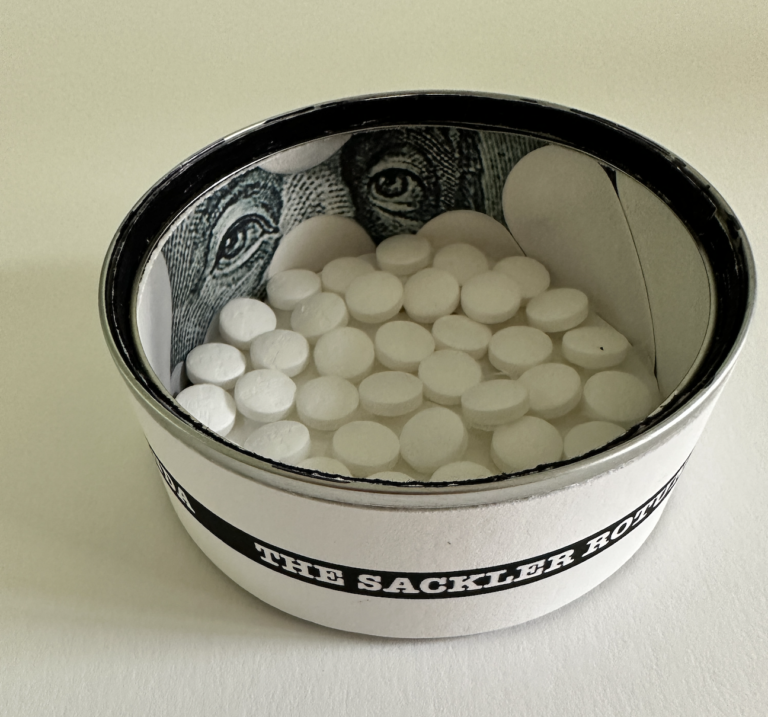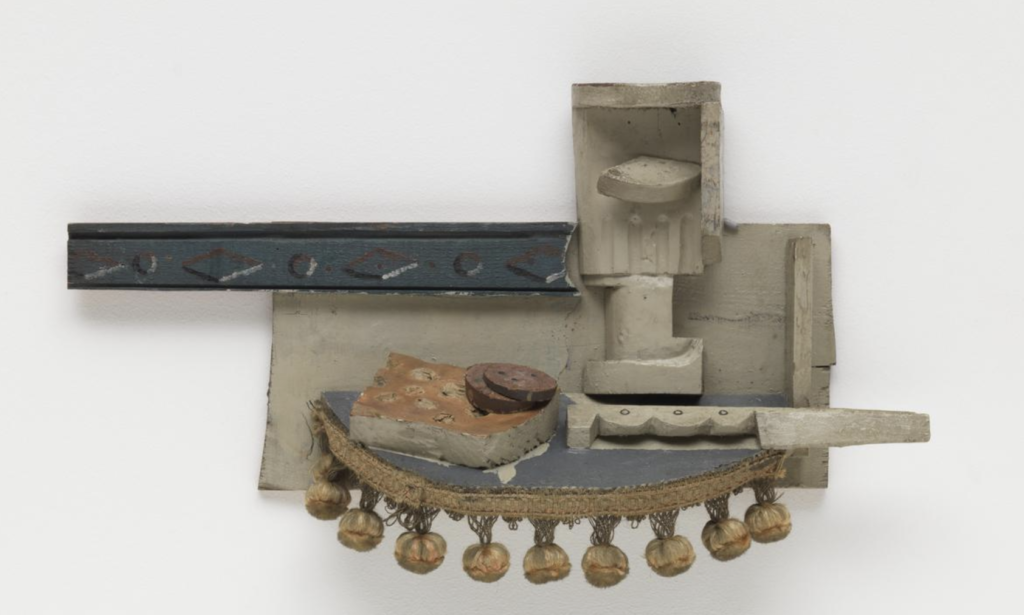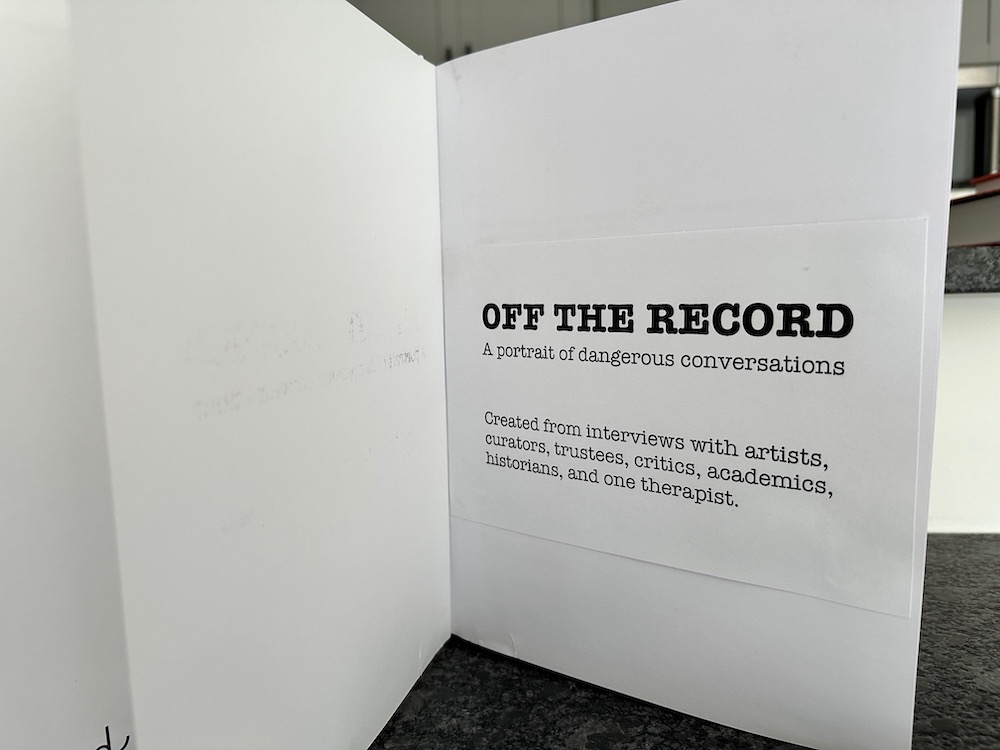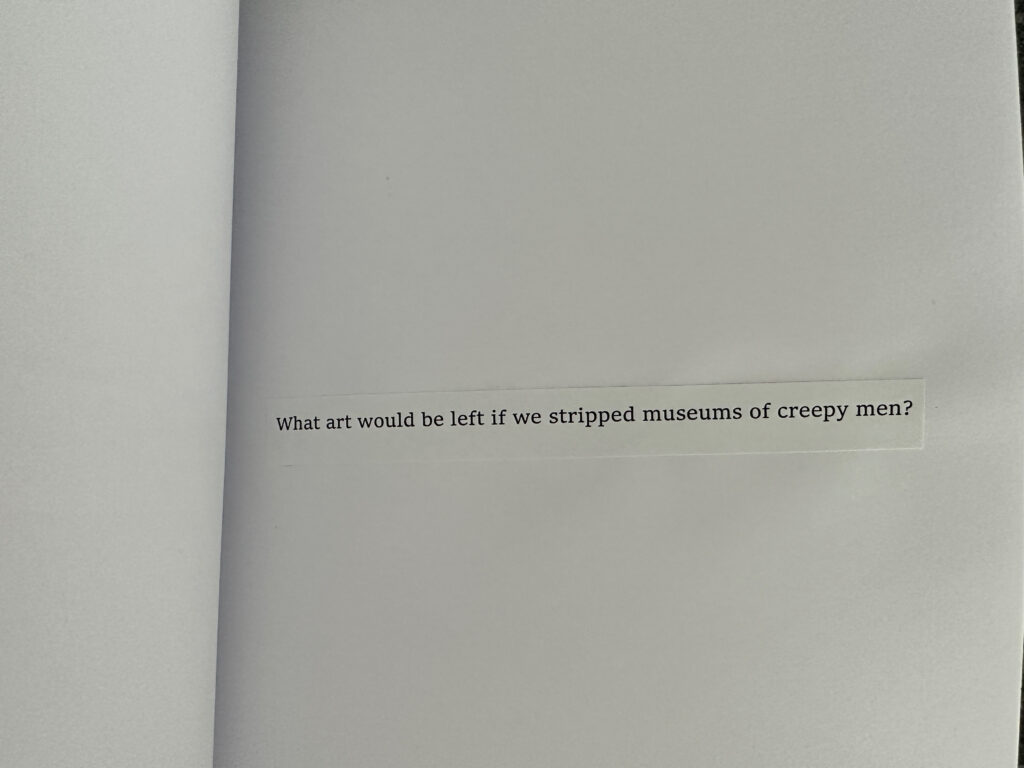
This week, I’ve been in a workshop on Surrealism and Collage/Assemblage with the very wonderful Brenton Hamilton. I wasn’t exactly sure what I was signing up for but I knew that if Brenton was teaching, I was in. And I also thought, Hey, I’ve never done collage and I have no idea how it differs from assemblage, so why not?
Assemblage is art that is made by assembling disparate elements – often everyday objects – scavenged by the artist or bought specially for the work. Collaging refers to the construction of a work of art out of paper items, such as photographs, newspaper, ribbon, magazines, books, etc.
The use of assemblage as an approach to making art goes back to Pablo Picasso’s cubist constructions, the three-dimensional works he began to make from 1912. An early example is his Still Life 1914 which is made from scraps of wood and a length of tablecloth fringing, glued together and painted. Picasso continued to use assemblage intermittently throughout his career. Here’s Still Life 1914:

To quote from the Tate (if you’re going to quote somebody why not the Tate, right?):
“...[Picasso’s assemblages] extended traditional still life painting into three-dimensional space. This composition is closely related to his paintings of the period: it appears to depict a table top or small sideboard, with a knife, a beer glass, two slices of sausage and a slice of cheese or pâté. This work, however, emphasizes that the painting is an object in itself. The incorporation of found objects – in this case, the real upholstery fringe to represent a table – helped to establish a new freedom in the artist’s choice of materials.”
In that freedom there’s room for spontaneity. And exploration of finding visual ways in which to communicate something important.
In our class, we were given six days in which to come up with three collages and/or assemblages. At first, I was stymied by the freedom! The terror of the blank page, right? I decided to work in response to something I completed last semester, my book OFF THE RECORD. In the book, as shown below, each 2-page spread contains a verbatim quote from someone involved in the art world (and, in particular, in the museum/gallery world) in response to my questions about how we think and talk about art in the current polarized and politicized climate.
The quotes are incendiary in some cases, and they are also fully confidential. I don’t even say where the interviewee works. But I can tell. you this much. I spoke to curators, museum directors, artists, academics, journalists, critics, historians, museum trustees, and even on therapist specializing in trauma and LGBTQ youth. Institutions included MoMA, The New York Times, The New School, Cornell University, Colby College Museum of Art, the Native American Film Council, El Museo del Barrio, The Boston Globe and many others.
The book is fat. Four hundred and ninety-five pages’ worth! So, roughly 245 quotes per 2-page spread.

Here is a quote, just to give you the idea!

So, using some quotes as my starting point, I created two collages and one assemblage.
The assemblage is called The Sackler Rotunda, and it is a response to the comment, “Well, now that the Sacklers are out, the Havemeyers are next up for museum cancellation. They made billions from sugar…and slaves.”
In case you are unfamiliar with the case, the Sacklers owned Purdue Pharma, makers of Oxycontin, which they claimed was non-addicting. The Sackler name was on countless numbers of world-class collections. Through the indefatigable efforts of the artist Nan Goldin, the Sackler name has been removed from nearly every institution, including The Met, The Guggenheim, The Louvre, The Tate and on and on.
Using an empty tuna can, a glue stick, a dollar bill, some Bayer aspirin, a Sharpie, some printed words, and Scotch tape, I created a little assemblage about the reality of Sackler wings in museums: drug money and blood on their hands. In my humble opinion…

I’ll share one more. It’s also in response to a quote from OFF THE RECORD. I was speaking with a gallerist who suggested that as a White person I am unable to understand racism. I replied, I am Jewish. I believe anti-Semitism is racism. And she replied:
“Anti-Semitism isn’t the same thing as racism.”
She went on to explain that it can be difficult to tell if someone is Jewish, judging solely on physical appearance, whereas in the majority of cases skin color is is a clear and reliable indicator.
And I agreed. But, I said, throughout history Jewish people have been “othered” in a number of ways, including being forced to sew a yellow star to their clothing. And so our invisibility is no longer the case. Additionally, there are the stereotypical characteristics: large noses, eyeglasses, curly or kinky hair. It”s true. No one ever thought Woody Allen is a WASP. And, there are faith-related “accessories”, such as yarmulkes (kipot), prayer shawls, etc., that force a choice between observance and assimilation.
The alarming increase in hate crimes against Jewish people (we represent 2% of the population yet are the victims of 55% of hate crimes in America) has made me double down on my belief that anti-Semitism is racism. I created this collage in response to the suggestion that it is not.

Here, I have made a replica of a German newspaper from 1939. I have attached a photograph of my father as a young man of about twelve. I have added the caption to the photograph (the quote), as well as a yarmulke, the yellow star he would have been forced to wear had he remained in Eastern Europe, proof of our name change from Solomon to Selwyn because the former was “too Jewish” for the Hartford-area businessmen who hired my grandfather to make engraved stationery, and the nose. For my father’s nose, I replaced his with a copy of the nose Picasso painted on his portrait of lover/artist Dora Maar. This seemed especially apt, given that Maar was openly anti-Semitic.
I believe we could ALL benefit from trying our hands at some collage and assemblage. By asking ourselves to think visually, we distill down complicated and even painful ideas to something succinct and powerful. I hope you’ll think about trying it. I’m going to keep going. But…school starts again on Monday, so the “free time” partay is about to roll to a stop.
Copyright © 2022, AMY SELWYN | All rights reserved.